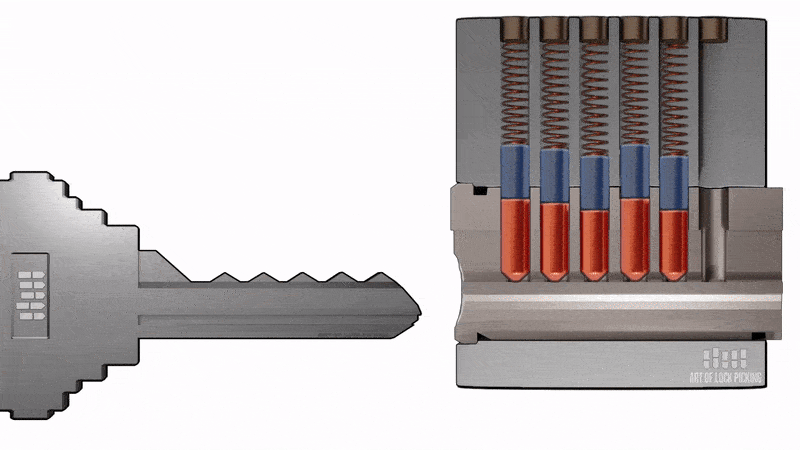Stop Lock Bumping Worries!
Lock bumping is a technique used by locksmiths to open locks by using a bump key. This spacial key can fit into standard locks and by tapping it they can move the pins and aligned them in order to open the lock.
This method won’t leave any sign of forced entry and it will be very difficult to know if someone has broke in to your property.
Lock bumping isn’t just limited to locksmiths and many thieves use it in order to open locks anytime.
How does lock bumping work?
Prepare a Bump Key
A bump key is made by cutting down a key to the deepest depth for each position on the key. This key must match the basic profile of the lock key hole to be able to enter the lock but not to operate it.

Insertion
Insert the bump key into the lock one click short of being fully inserted. This precise positioning is highly important for the technique to work.
Impact and Timing
Hit he back of the key with a screwdriver handle or a special bump hammer and while a slight twist is applied to the key.

Pin Movement
In a pin tumbler lock there are pins and the impact will move the pins to jump within their chambers. If done correctly all the pins will clear the shear line between the cylinder and the housing.
Turning the Cylinder
The slight twist on to the bump key at the moment of impact will turn the lock as if the correct key was being used and open the lock.

There are few locks that can resist this bumping method:
High Security Locks
High security locks usually come with better security features that make them resistant to lock bumping like sidebar and angled pin cuts.
Brands like Medeco and Mul-T-Lock are well known for making high security locks that offer protection against bumping alongside drilling and picking.
Smart Locks
Many smart locks don’t use traditional key anymore and operate with codes, biometric fingerprint or smartphone. Without a traditional key hole these locks are full proofed to lock bumping.
August Smart Lock, Schlage Encode and Yale Assure Locks are the best smart lock to avoiding lock bumping.
